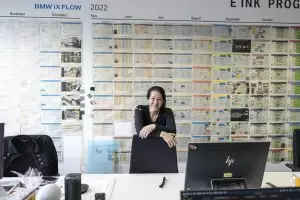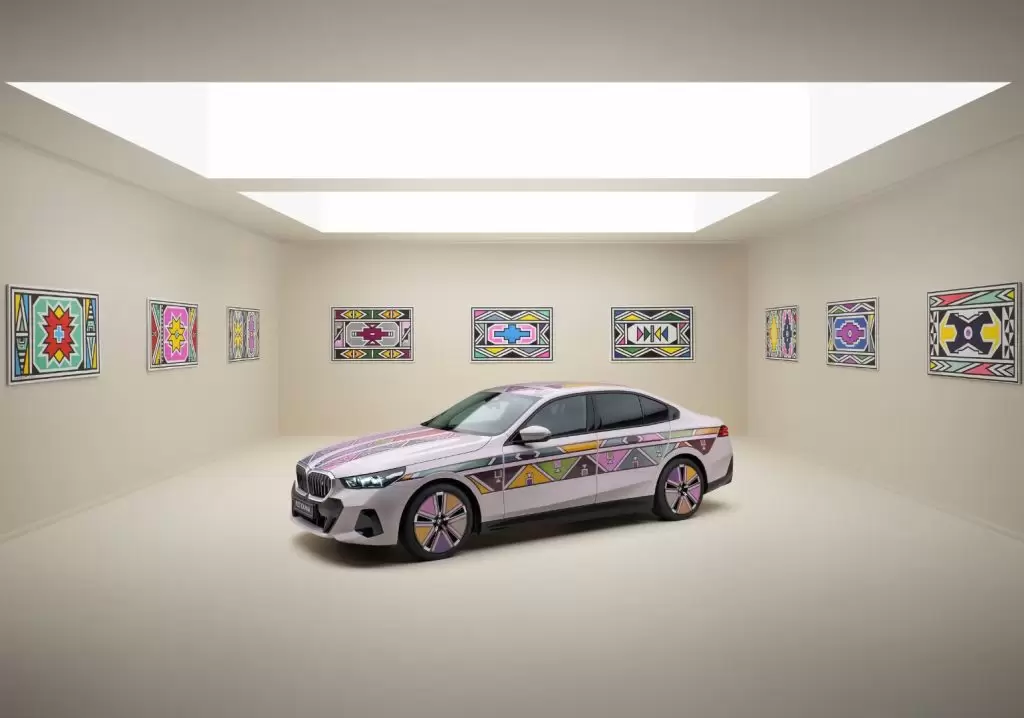The idea of a colour-changing vehicle may sound like something out of a James Bond movie, but it’s a reality and the work of Australian-born BMW engineer Dr Stella Clarke.
Dr Stella Clarke grew up in the Sydney beachside suburb of Maroubra but has lived in Germany almost for 20 years. There, she works for German luxury car maker BMW.
She began her degree in mechanical engineering at the University of New South Wales and went on to study at Pennsylvania State University before relocating to Europe. In 2007, she gained her PhD and joined BMW AG as a Haptics Expert and Vehicle Production Engineer at the company’s Munich headquarters.

Clarke has since worked for BMW as a Perceived Quality Specialist, an Advanced Development, a Concepts and Prototyping Engineer, a User Interface specialist on future models, and, most recently, the Lead Engineer of the company’s innovative E Ink projects.
She shared her pioneering work in the field of automotive E Ink technology during a recent visit to BMW Australia’s headquarters in Mulgrave, Victoria.
A car of many colours
“I’m known as the person who invented the colour-changing car,” Clarke told create. “It’s something I fought for years before it got even to the very first [prototype].”
Clarke explained that the idea grew out of her love of technology and a simple insight she had while using an e-reader tablet.
“You’ve probably noticed [that] an e-reader … lasts forever,” she said. “It hardly needs to be charged. It’s very, very low energy. And if you read it on a holiday in the sun it still looks awesome. It’s not like your phone, where you have to compete with the sunlight and you can’t see your screen if it’s really bright.
“That’s the kind of technology that E Ink is. Every other dynamic changing technology is light-based. Our phones are OLED [or] LCDs. Even the projectors in this room have LCDs in them. The lights here are LEDs. Every dynamic changing surface that we deal with is light, and this is colour change.”
For Clarke, the most amazing thing about E Ink is that it’s bistable, meaning the e-paper will remain whatever colour it is displaying if the energy source is removed.
“For an engineer, it’s the closest to magic I think you could imagine,” she said. “Imagine cutting the wires that go to these lights and the lights stay on.”
Clarke first proposed the idea of using E Ink technology to create a colour-changing car within BMW in 2018, using tiny rectangular e-reader modules sourced from Amazon as the building blocks for her prototypes. But it would not be until 2022 that the first fruits of her endeavours were shown to the world.
That vehicle, the world’s first colour-changing car, was the BMW iX Flow, which Clarke and her colleagues introduced at the giant Consumer Electronic Show (CES) in Las Vegas.
Sudden exposure
Clarke admitted that applying the E Ink technology to the curved sides of the vehicle proved incredibly complex.
“This material is very hard to work with. Nobody has taken the E Ink outside of a little rectangle and we were the first to put this on a curved surface. It was very difficult.”
She explained that the entire body of the iX Flow was covered in special E Ink tiles that enabled a simple alternating black and white colour palette. But it was nonetheless one of the show-stoppers at what is regarded as the world’s biggest tech conference.
“There was an awful lot of exposure,” she said. “We ended up being the most visible company at CES. Even in front of typical consumer electronics companies like Google or Sony.”
The exposure BMW received was enough to convince the car maker to provide more significant funding and, one year after the iX Flow’s debut, Clarke and her team returned to CES with the BMW i Vision Dee, a classic sporty sedan incorporating 240 E Ink sections capable of displaying 32 different colours.
The iX flow featured the first use of newly developed full-colour E Ink technology, which presented its own challenges both for Clarke and the E Ink supplier.
“This time we were working with a material that hadn’t been in e-readers forever,” she said. “It was new for them, it was new for us, and the project that followed was [extremely] complex.”
Full-colour E Ink material is like a sheet of paper with three layers in it, she explained. The middle layer consists of tiny transparent capsules that are about the size of a human hair, and inside them are four colour particles, comprising cyan, magenta, yellow and white.
“It’s very similar to what you see in a printer cartridge,” Clarke said. “Imagine those ink particles not in cartridges, but inside the e-paper … They react to small electrical fields, and the mixture that comes to the surface is the colour of the car.
“You have an unlimited number of colours.”
The moment approaches
In February this year, Clarke and her team wheeled out their most ambitious evolution to date, a rolling celebration of the intricate artwork patterns of South African artist Ester Mahlangu.
“The i5 Flow Nostokana is full colour segmented with 1,349 individual segments,” Clarke said. “The numbers are quite big and the complexity is also very much correlated with this number – because if you can imagine the wiring [and] the software behind that [are] quite complex.”
The i5 Flow Nostokana demonstrates the rapid advances BMW and Clarke have made with colour-changing vehicle surfaces, and is not far removed from how the technology can be applied to series production, which Clarke estimates is between three and five years away.
